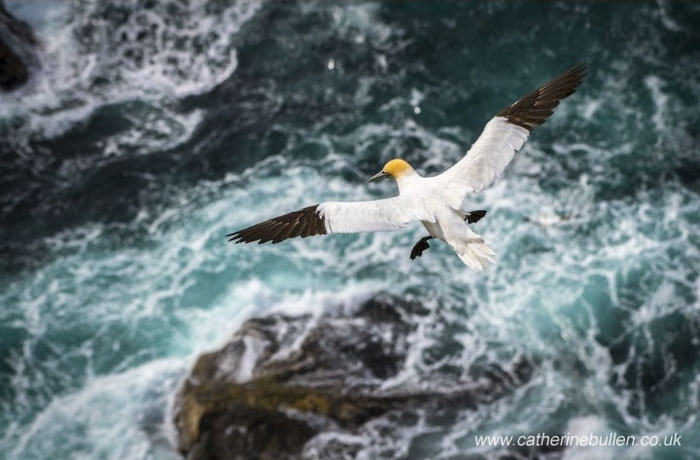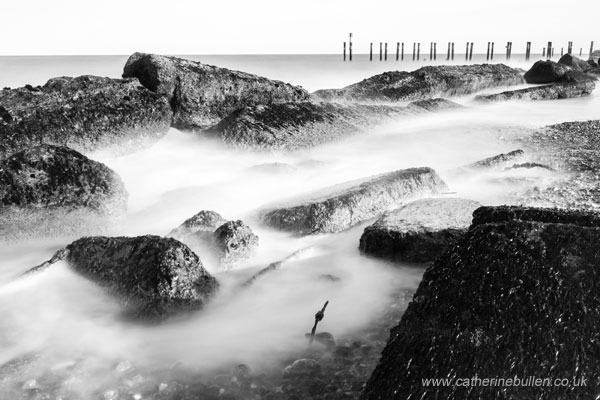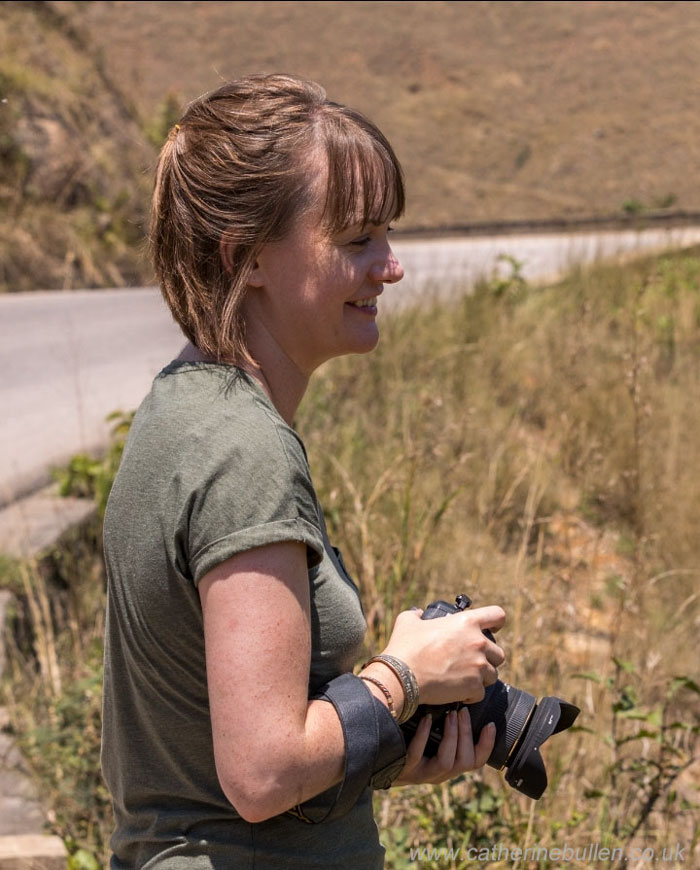Through her travels, Catherine Bullen has established herself in the photography world with quite an impressive portfolio. With an eye for detail, her work primarily focuses on capturing breathtaking and detailed images of nature and wildlife. Catherine conveys her passion for the environment by capturing remarkable images of wildlife and other elements of the natural world both at home in the UK and abroad. As you browse through her photos below, I think you’ll agree that she’s quite an accomplished photographer with a unique talent.
It’s my pleasure to share Catherine’s thoughts and ideas about her work with my readers. Catherine, thank you so much for taking the time to share your view of the beauty of the world through your words and photography and for allowing us to get to know a bit about you.
If you’d like to learn more about Catherine, please visit her website. You can also follow her on Instagram.

Can you please tell the readers a bit about yourself?
I’m a photographer specialising in nature and wildlife photography. I use natural light in my photographs to create vibrant images, creatively using depth of field. I often alternate between both macro photography and wider-angle shots, but in both cases aim to give a sense of the landscape or habitat in the images. I enjoy travelling, exploring and discovering more about the world we live in, but the restrictions which COVID-19 has brought over the last year has really given me time to learn more about the nature on my doorstep.
Where do you call home?
England, UK.
After browsing through your website, I see that you have built up an extensive collection of photography. When did you first become interested in photography and how long have you been involved with it?
I first experimented with photography whilst studying Fine Art at college, and I’ve been hooked ever since – so much so that I went on to study photography at university, where I loved being able to print my own images in a darkroom as well as working digitally. I have worked in the photographic industry ever since.
When shooting subjects, what do you find most challenging?
Early starts, I know they are needed but they never get any easier!
What would you say your most remarkable wildlife encounter has been?
Spending time with a conservation team from the KwaZulu Natal Wildlife Agency, in South Africa is something I’ll never forget. The team were trying to document the number of Nile crocodiles in the Mpathe River, which is in the Western Shores of the iSimangaliso Wetland Park. This is the most Southern population of Nile crocodiles in Africa, and the team were studying the population dynamics. Catching the crocodiles hadn’t been easy, but snare traps had been set and when I was with them two crocodiles had been caught. Blood, urine, and tissue samples were taken and the crocodiles were tagged before being released. I documented their work, and also helped to record the crocodiles’ statistics.

How did you develop your style?
I would say that personally I don’t feel I have a distinctive style and I’m still working on it, but I would be interested to hear what your readers think. Everyone looks at things in a different way, and I’m always curious what other people think about my work.
Professional photographers know that being successful is a combination of having the right equipment, knowing how and when to use it, and then having photographic vision (creativity). You photograph an array of subjects that have been photographed by thousands of people yet you seem to be able to capture fleeting moments with unique moods and emotions. How do you ensure this constant creativity?
Where possible I try to give myself time, I’ll go out on the shoot with no pressure to stick to a timetable or be back by a certain time. It’s not always possible, but being able to immerse yourself in a location for an extended period of time helps, you get an idea of the light, the landscape, and if photographing animals, the best spots to see them. Initially, if it’s a subject I haven’t shot before, I’ll aim to capture images which I feel are slightly more standard – portrait images of the animal, for example. Once I have them I know that even if the rest of the shoot is a disaster I’ve got some shots in the bag. I can then relax and aim to capture more creative images, experiment, and watch the behaviour of the animal.

Who or what inspires you in your personal life and work?
Nature and kindness.
What do you hope viewers take away from your images?
Enjoyment, appreciation of nature, and a connection.
What is your favorite part of heading out to a new location?
Not knowing exactly what I’m going to find! However much you read up on it, nothing beats going somewhere for the first time and experiencing the nature found there. I like to gradually get used to a new location, taking different paths and trails to discover it all.
Do you have any tips for new photographers who want to take better wildlife photographs?
Pick a location close to home which is quick and easy to get to when you have spare time. Take your camera with you and practice – get used to the camera settings, so you know how to change them quickly without really thinking about it. Learn about the wildlife and nature seen there, read up on it, and it’ll help you learn animals behaviour and what plants may attract what insects at what time of year, for example. Going to the same spot often will also help you to know the best spots to head to at what time of day, and what you might be likely to see.

What type of camera(s) do you shoot with? What is your favorite lens?
I shoot with Nikon camera equipment, my favourite lens just depends on what I want to capture. The 18-200mm is very versatile, and it’s the lens I’ll have on if I have no fixed subject for the day but just want to explore nature and see what appears.
What is in your camera bag?
It changes depending on what I want to focus on that day. I tend to just take one lens with me, any more than that and I just end up carrying it around and not using it! I’ll always sneak a few snacks and a drink in too – once I’m out I want to stay shooting until I’m finished and not have to stop early for any reason.
What is your favorite photography accessory?
I’m enjoying experimenting with a Big Stopper filter at the moment – it allows you to use long shutter speeds to capture movement in a different way. I love to use it to capture movement in water, and it’s kept me busy for hours on the coast, wading along the shoreline in wellies to shoot long exposures of the sea.
What piece of equipment would you most like to get but don’t have yet?
I would love to have the MP-E 65mm f2.8 1-5x Macro lens, to experiment with some extreme macro images – but as it’s a Canon lens I would unfortunately also need a Canon camera body to go with it, and things then start getting expensive!
How important is Photoshop or other image editing software in your final images?
Editing software is really important, it can completely change the look or feel of your image; from simple image adjustments, to add more polish to the final image, to merging different exposures or more. I think editing is a key step to making a good image even better.

Was there a point in your journey when you started to feel really good about your work? If so, what did it feel like to get past that “tipping point?”
Getting shortlisted for major photography competitions, such as the Wildlife Photographer of the Year competition which is exhibited at the National History Museum in London, or Highly Commended at the Bird Photographer of the Year was a good feeling. Competitions do always come down to the personal opinion of the judges, so it’s great to get recognition for your work but I don’t dwell on it if I’m not successful.
Do you have any projects that make you look back and shake your head? What made the experience so unpleasant?
No, I wouldn’t say that I have. There were times when I was photographing in the cloud rainforest in Madagascar, and it was absolutely throwing it down with rain. I was out at night with a head torch and waterproofs, water running off my camera cover, trying to spot a mouse lemur. I remember chuckling to myself just thinking how odd or unpleasant some people might find it, but I was still enjoying myself – it was nice to get back and dry out eventually though!
What do you think the future holds for you? Where do you see yourself in the next few years? – Do you see yourself as a photographer many years down the road?
I will continue to learn more about wildlife and nature, it’s interesting to learn more about the natural world and how everything is interconnected. That in turn feeds my photography, knowing what behaviour to look out for or what to expect at what time of year for example. I’m also learning information that I can pass onto other people, sharing not just images but a little snippet of a plant or an animal’s life, that may inspire an appreciation of nature in someone else. I don’t see a time when I won’t be a photographer. When I go out to take photographs I never know exactly what I’m going to see, and that’s part of the enjoyment. I aim to continue to discover more of the world in which I live, creating and sharing photographs along the way.

Leave a Reply